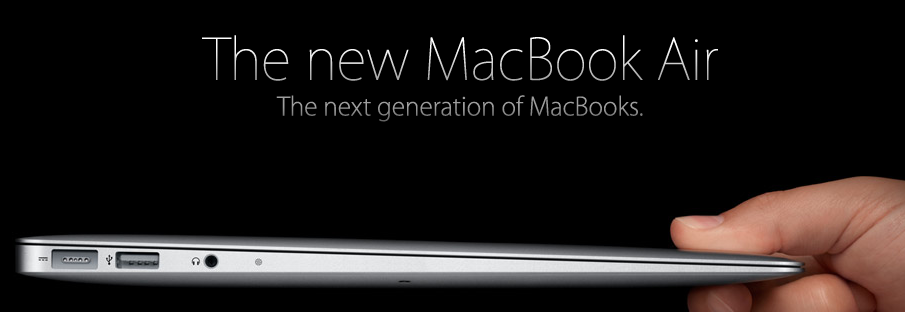Why the new MacBook Air isn't for pros

Apple today announced an update to its MacBook Air sub-notebook which, as I previously noted, hadn't been updated in almost 500 days — an eternity for Apple hardware. The problem is that it isn't powerful enough for professional users.
One thing that I feared about the new MacBook Air rumors was that it would be ship with a Core 2 Duo processor -- a processor (circa Q3 2008) that is bigger, slower and hotter than the current generation Core i3-530.
My nightmare came true today.
Apple indeed shipped two new MacBook Airs (13.3 and a new 11.6-inch model) with a two-year-old Core 2 Duo processor, instead of the more modern Intel i3 processor that just about every other PC OEM ships in its notebooks.
The new MacBook Air simply isn't powerful enough to be used as a primary computer for professional users. The Core 2 Duo processor, 2GB of RAM, and 64GB SSD won't adequately run applications with large resource requirements like VMWare, Final Cut Pro or Photoshop. Luckily, the RAM can be bumped to 4GB (+$100) and the SSD can be bumped to 128GB (+$200) -- which helps -- but even then the new MBA won't be useable as a primary computer for power users.
Interestingly, Apple didn't include an onboard 3G chipset, meaning that road warriors will have to use either WiFi or connect an external mobile broadband device to get Internet access on the road.
I'm not sure exactly why Apple chose a older chip instead of the newer Core i3 (the keynote's only been over for 30 minutes), but I'm sure that there's got to be a reason.
The cynical side of me thinks that it's planned obsolescence at its finest. In other words, Apple fully plans to upgrade the Air to the Core i3, but they want to sell a bunch of Core 2 Duos first, then make everyone buy it again, when it ships with the i3 -- say, next summer. Maybe Apple had a bunch of old C2D chips sitting in a warehouse somewhere that they needed to use up?
Apple did the same exact thing with the iPad, releasing the WiFi version first, then the 3G version shortly after. A good case can be made that Apple did the same thing with the new Mac mini and MacBook (non-pro) which both still ship with the Core 2 Duo.
Next up: why the new MacBook Air is the ultimate blogging machine...
What's your take on why Apple snubbed the Core i3 in the new MacBook Air?
More Apple "Back to Mac" coverage:
- Mac OS X 10.7 "Lion" - Sneak Peek
- Don't forget: Microsoft is (supposedly) working on a Windows app store, too
- Apple welcomes the next generation MacBook Air; starts at $999
- Apple Mac OS X Lion: what you need to know (so far)
- Apple iLife '11: Everything you need to know
- FaceTime headed to Mac OS X; beta version available today
- Back to the Mac event (photos)
- Live: Apple's Back to the Mac" Event
